- Administrator
- Albums and Singles
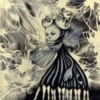 Before becoming Troum, Stefan Knappe and Martin Git, plus Helge Siehl, operated as Maëror Tri, releasing a slew of strange, dark albums in limited runs on cassette. Ambient Dreams first appeared in 1990 in an edition of only 18 copies but finally gets a wider release in its CD debut. Using only natural sound sources without electronics, the group crafts an eerie and gripping recording that still sounds startlingly fresh today.
Before becoming Troum, Stefan Knappe and Martin Git, plus Helge Siehl, operated as Maëror Tri, releasing a slew of strange, dark albums in limited runs on cassette. Ambient Dreams first appeared in 1990 in an edition of only 18 copies but finally gets a wider release in its CD debut. Using only natural sound sources without electronics, the group crafts an eerie and gripping recording that still sounds startlingly fresh today.
Often booming cavernously, the music is neither menacing nor comforting. Instead, it is a constant shuffling of the feet, as if being led blindfolded through a new town via its alleys and underpasses. Sounds that are heard but subconsciously tuned out as a matter of everyday existence are instead drawn out and used for a sense of familiarity in otherwise unstable footing. The group draws from a wide palette of material to bring depth and nuance to each track to give a sense of place, even if that place is only imaginary.
Hints of trains and bells and muted voices on "Amputation" could be a disorienting walk down some city street. "Waves Without Gravitation" sounds like boiling vents and furnaces pulsing against each other under fluorescent lamps. "Window to the Absolute" is a chorus of echoing subway tunnels moments after a train has left, while the "Voices On My Skin" sing like hazy machinery. Most of the songs are more atmosphere than emotion, but "Sanctified Frequencies" comes closest with an undulating sheen of harmonics that forms a melodic shimmer, like a blissful audio version of northern lights.
Enhanced by Jesse Peper's beautifully bizarre cover, Ambient Dreams is a rich and memorable album. Instead of being cleverly clinical or analytical, this music is alive and breathing, pulsing with a near-mystical quality and imbued with a replenishing vitality.
samples:
Read More
- Administrator
- Albums and Singles
 Expecting a compilation of various Iranian electronic artists from the past 40 years, I was a little disappointed to discover that this two-disc set only covers two artists, the older Alireza Mashayekhi and the more recent Ata Ebtekar, aka Sote. Even so, the music found within is as wild and vivid as anything I could have hoped for and a decent enough introduction to some of the ideas at work in avant-garde Iranian music.
Expecting a compilation of various Iranian electronic artists from the past 40 years, I was a little disappointed to discover that this two-disc set only covers two artists, the older Alireza Mashayekhi and the more recent Ata Ebtekar, aka Sote. Even so, the music found within is as wild and vivid as anything I could have hoped for and a decent enough introduction to some of the ideas at work in avant-garde Iranian music.
Iran may not be the first place one thinks of when considering electronic music, but it's not exactly without precedent. When Shah Mohammad Reza Pahlavi hosted grand festivities celebrating 2,500 years of the Persian empire, he commissioned an electronic composition from Iannis Xenakis that was played over 59 loudspeakers positioned throughout the ruins of Persepolis and accompanied by a parade and light show. It was perhaps the most ambitious music spectacle since Edgar Varèse's "Poème Electronique" broadcast from the 425 speakers of the Philips Pavilion at the 1958 World's Fair. With world leaders and royalty attending this lavish celebration, they were an unusual audience considering that Xenakis' piece likely sounded like mere noise to casual listeners. Even though the Shah was deposed shortly thereafter and the country since took a different turn politically, Iran still has interest in electronic music and its own masters of the form.
Alireza Mashayekhi is generally considered to be one of the pioneers of modern music in Iran. Educated both in his home country and in Europe, particularly Vienna and the Netherlands, he retained a fondness for his own culture but also believed that multiculturalism was an important way to explore truth and its contradictions. Because of this, his work throughout the years takes on a variety of styles, some influenced by Persian music, some not, and some containing elements of both. While "Mithra" contains Persian melodies, they are presented in a huge space with swells of reverb as if transmitted through layers of dreams. On the other hand, "Development 2" is intended to be indifferent to theme, which is reflected in its percolating buzzes and unanticipated clouds of random tones. "East-West" and "Chahargah 1" are both inspired by Iranian music yet are hardly traditional, while "Panoptikum 70" and "Stratosphaere 1" defy all anticipations and could even be considered frightening by the unwary. Mashayekhi's work is absolutely fascinating and worthy of comparison to that of any other electronic composer who's better known in the West.
While his music is more than enough to absorb on its own, there's a second disc included of contemporary music from Ata Ebtekar. Much of his work revolves around traditional Persian scales that are often deconstructed and presented in new ways. His music differs in that much of it has a crystalline timbre and relies a lot more on fluid movement. There is also a formality to his work that links it to his country's past musical traditions. Songs like "Synthetic Overture (Satan's Lullaby)," "Picture of a Whisper," and "Cry" are based on old Iranian folk songs but performed on modern electronic equipment. "Saint Homayun" is inspired by Persian modes, "Micro Tuning" deals with the idea of using Iranian intervals of quarter steps rather than the Western tradition of half steps, and "Nashid" is about an ancient musician who invented an Iranian song form. Because all of these subjects are so closely linked to Iranian musical structure and compositional traditions, much of the music has the feel of an academic exercise. There's a certain restraint to Ebtekar's music, and while it may suit his preoccupations, it's not nearly as enjoyable to someone like myself who doesn't share them.
Perhaps comparing the two composers is inevitable in this context. I largely prefer the originality and maturity of Mashayekhi's work and the way he sculpts sound. In contrast, even though Ebtekar's music has better clarity, it lacks much of Mashayekhi's textural complexity and innovation. I'm not disappointed that the second disc was included, but I would have preferred more music from Mashayekhi instead. Even better would have been some selections from a wider variety of artists, yet the music on this compilation, especially the first disc, is still something to be treasured.
samples:
- Alireza Mashayekhi - Mithra
- Alireza Mashayekhi - Development 2
- Ata Ebtekar - Nashid
Read More
- Administrator
- Albums and Singles
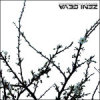 The music of Zeni Geva has variously been described as heavy metal, noise rock, math rock (apparently because of their use of atypical time signatures), death metal, thrash metal, sludge metal, doom metal and industrial metal; in truth it is all of these categories while at the same time travelling far beyond the trite parameters and restrictions usually associated with them. Maximum Money Monster originally debuted in 1990 and here includes three extra live tracks as bonus material.
The music of Zeni Geva has variously been described as heavy metal, noise rock, math rock (apparently because of their use of atypical time signatures), death metal, thrash metal, sludge metal, doom metal and industrial metal; in truth it is all of these categories while at the same time travelling far beyond the trite parameters and restrictions usually associated with them. Maximum Money Monster originally debuted in 1990 and here includes three extra live tracks as bonus material.
Zeni Geva's music is above all an intensely intelligent redefinition of 'rock' boundaries and firmly pushes those very same boundaries into new post-rock territories. Admittedly the music does share many of the characteristics and stylings indigenous to the genres mentioned above (such as gruffly shouted vocals, overdriven guitar, pounding drums and screaming solos) but in this case it amounts to sheer intellectual laziness to lump them in with the often moribund and immature aesthetics of such music as well as exhibiting a distinct lack of imagination; there are indeed elements of metal in all its guises in there and no doubt they would be the first to acknowledge the debt owed. ZG are more knowing than that though; using these aspects in combination with the aesthetics, sensibilities and rawness of both punk rock and Japanoise the music becomes catalysed into something that is at once all these things and something new, changed beyond the original conception.
There is no denying that ZG constitute a behemoth of a musical outfit both in terms of sound and sheer vital energy. Null's overdriven guitar and powerful voice, supported by the backbone of the relentlessly driving and pounding drums, form the essential blueprint of Zeni Geva's vision. It could so easily have been something of a Frankensteinian chimera, but this creature is expertly and deftly handled by all participants, tightly controlled yet simultaneously allowed full freedom of expression. The various facets and influences show through individually while playing their co-operative part in the whole; the musicians show a flair for combining everything without letting it become an indistinguishable (and undistinguished) mess.
I would venture to say that Japan is better known for artists and outfits espousing a more extreme vision—bands like Zeni Geva help to redress the balance with their marrying of familiar rock structures with a fiercely independent intelligence, and an intelligence not willing to yield to stasis. The vast majority of music, even that considered to be underground, exists within a comfort zone which it is often reluctant to step outside of. Not only do ZG step outside their own comfort zone, but they do so fearlessly and with both eyes very much firmly open.
samples:
Read More
- John Kealy
- Albums and Singles

Les Protorhythmiques goes on quite a journey; chopped up recordings of voices and instruments give way to massive drones and synthesiser pulses. High frequencies cut through the mass of sound, stretching out the feeling of empty space. In places the piece is not a million miles away from Nurse With Wound recordings like The Ladies Home Tickler. Indeed when the tribal sounding drumbeats kick in, there is a huge resemblance to "Yagga Blues." It is strange comparing a Ferrari- related piece to one of his bastard children but that is the way this piece leads my mind.
Although musique concrete may be more garde than avant garde, this is a nice example of 21st century sound composition. There is a definite feeling of Les Protorhythmiques looking both to the past at the old masters but also to the future in terms of approaches and sounds that new technologies will bring. It is a very satisfying and sonically exciting piece of music, it is too bad Ferrari never got to finish what he started.
Read More
- Scott Mckeating
- Albums and Singles
Grounding the skyfloat soloing with a Texan outsider vibe and more solid strumming, the link to traditional forms remains despite the psychedelic reach. There are yielding chipped chimes throughout "One," a sense of displacement pervading the music. A pensive and lost feeling melody is coaxed into standing out on its own, MacGregor hinting at folk roots. Strands of reality are separated out as layers come and go, his wayward vocals straining to be understood. The closing "The Flow of Time" is free of this tension, a blown mind liberated in the breeze of the fuzzy guitar halo. Growing into a furious white light chant of feedback, there's the kind of fire worthy of his colleague in The Bark Haze.
Read More
- Mike Barrett
- Albums and Singles
Sea From Shore opens strong with "Rockist Parts 1," a disjointed pop song built around a loop of vocalized vowel sounds and "Rockist Part 2," a reprise that breaks the song apart even more into a no-wave, dub-plate version, spacing out the arrangement and exploring the sonics of all the instruments. Add a loud and blown-out drum sound played like the ghost of John Bonham, and this album's got a catchy and sonically intriguing start. Being from England, School of Language looks like they found a niche in Chicago's avant-rock scene. It is too bad then, that the rest album quickly drifts into rote, cliché indie rock after track two.
The main body of the disc takes cues from tired '70s classic rock radio. Songs like the ballad "Keep Your Water" sound like a cross between late-'70s Pink Floyd and aforementioned Led Zeppelin. Aside from excellent production (I am stuck on this drum sound), this album drifts along bland soft-rock pretensions.
So much of this album is contrived and generic that I can't see it being more than dollar bin fodder. School of Language sits well with the current scene of "smart" pop bands, like Broken Social Scene and label-mates Firey Furnaces, but lacks the sincerity and spirit that has given these other bands so much staying power.
Read More
- Administrator
- Albums and Singles
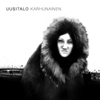 Roughly a year and a half after his prior album as Uusitalo, the prolific Sasu Ripatti returns with a new collection of reliable and sometimes engrossing tracks targeted for progressive underground dancefloors. Though practically every one of its ten analogue cuts could keep a bespectacled Mutek crowd moving, his latest merely supplements his healthy catalog instead of strengthening it.
Roughly a year and a half after his prior album as Uusitalo, the prolific Sasu Ripatti returns with a new collection of reliable and sometimes engrossing tracks targeted for progressive underground dancefloors. Though practically every one of its ten analogue cuts could keep a bespectacled Mutek crowd moving, his latest merely supplements his healthy catalog instead of strengthening it.
Whether via Luomo's Bohemian tech-house or the expansive soundscapes of Vladislav Delay, Sasu Ripatti apparently has an outlet and a moniker for each of his musical tendencies. Uusitalo, however, has become the one for his proper yet devious minimal techno productions, imbued with Berlin's dubby atmospherics and Detroit's post-modern melodies. 2006's Tulenkantaja, released on Ripatti's vanity label Huume, reminded listeners that this artist still had love for deep and engaging dance music, something criminally absent from Luomo's anticlimactic Paper Tigers, also released that year. Karhunainen, named for one of his father's plays, follows up that deferred sophomore release in prudently similar if slightly banal fashion. In this instance, the incredibly accomplished Ripatti hasn't quite mustered up a masterpiece, yet even an indistinct Uusitalo album holds my interest more than the vast majority of recent electronic music full-lengths out cluttering the market.
Opening with studio clatter and shifting filmic pads, Karhunainen misleads with the beatless "Vesi Virtaa Veri" before kicking into gear with the subsequent "Korpikansa." Its 4/4 percussion pokes around the subtle organ drones and giddy bassline, with once suppressed stabs urgently rising later in the mix. Nodding backwards to his heady days at the forefront of the clicks and cuts scene, "Sikojen Juhla" captures and loops a snippet of incomprehensible vocal over untamed elastic bass and bubbly bursts of sub-aquatic sound exploding like delicate fish roe. "Satumaa" impregnates the saucy MILF of Sheffield bleep with spindly bliss while the title track nimbly works its deep, spirited hook into the minimal mélange. Stepping away from the previous danceable fare, closer "Puut Juuriltaan" expertly wipes the floor clean with shimmering sunny warbles that would make Ulrich Schnauss blush. Fitting in quite well with the tones and moods of Kompakt's Pop Ambient series, the song leaves me wishing there had been more material like it on here. Perhaps yet another pseudonym is in order.
While not remotely as compelling as Whistleblower, released earlier this year on Huume, Karhunainen simply doesn't need to be. A respectable addition to Ripatti's catalog, it closes out a solid year of releases from one of the few Force Inc. / Mille Plateaux survivors.
samples:
Read More
- Administrator
- Albums and Singles
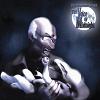 The eyeballed-ones recent foray into storytelling and radio plays has been patchy to say the least. Tweedles was disappointing and the Timmy YouTube viral videos frequently seemed to be lacking something. However, it has never been written anywhere that The Residents had to placate their audience all the time (in fact, if anything should be written it is that The Residents should not placate any of their audience any of the time). That being said, this latest album seems to work far better than its predecessors as it melds a number of musical (and other) styles in that inimitable Residential fashion.
The eyeballed-ones recent foray into storytelling and radio plays has been patchy to say the least. Tweedles was disappointing and the Timmy YouTube viral videos frequently seemed to be lacking something. However, it has never been written anywhere that The Residents had to placate their audience all the time (in fact, if anything should be written it is that The Residents should not placate any of their audience any of the time). That being said, this latest album seems to work far better than its predecessors as it melds a number of musical (and other) styles in that inimitable Residential fashion.
Continuing their storytelling mode, The Residents recreate the tale of The Sandman as written by E.T.A. Hoffman. This audio play deals with paranoia, childhood trauma and the shadow at the edge of the night that pushes the fragile over the edge. I must admit the story itself is somewhat lacking but this is a strong album, indeed stronger than their more recent broadcasts. And while the acting may be hammy, the almost kitsch delivery of the lines fits with the style of the production. The Residents have always combined the absurd with the unsettling and The Voice of Midnight is in this regard no different to the rest of their back catalogue. In the opening scene, the action goes wildly from screamed phone conversations to a soliloquy resembling something from The Tiger Lillies' canon, all falsetto vocals and the melancholy music of a deserted theare.
The rest of the album steers mostly clear of songs and instead sticks to dialogue with atmospheric music and sounds. Much of the time it is a nice combination of Angelo Badalamenti style ambience, weird noises, and cheap sounding keyboards typical of The Residents. When the dialogue is sung rather than spoke, The Voice of Midnight sounds like some demented opera which suits the melodramatic plot down to the ground. I wish they made the characters sing all the time as these moments are definitely the best and oddly the most convincing in terms of acting.
I cannot pretend that The Voice of Midnight will keep me listening over and over again due to the complexity of the plot or any layering of meanings in the dialogue. Instead it is the power of the mood evoked that will give this album a long shelf life. It is one of the more accessible sounding albums that The Residents have released but retains the weirdness that makes them so compelling. It will be interesting to see if they continue to do these audio plays or whether they will change the stage and combine their multimedia experiments with their dramatic flair? Or of course decide that it is time for something completely different. I feel The Voice of Midnight could act as a new springboard for another concept concert tour, one can only hope.
samples (WARNING: May give away plot details):
Read More
- Administrator
- Albums and Singles
 Lithuanian conceptual artist and performer Gintas Kraptavicius manipulates minimal digital sources and acoustic vibrations in the service of narrative rhythms and electro-acoustic wand waving. Rather than merely barricading himself behind walls of atmospherics, Kraptavicius uses his tools to explore sound in ways that are both unpredictable and inviting.
Lithuanian conceptual artist and performer Gintas Kraptavicius manipulates minimal digital sources and acoustic vibrations in the service of narrative rhythms and electro-acoustic wand waving. Rather than merely barricading himself behind walls of atmospherics, Kraptavicius uses his tools to explore sound in ways that are both unpredictable and inviting.
This is not to say that there aren't austere or abrasive moments on 13 Tracks. In fact, the album has plenty of them. Yet Kraptavicius' methodology disarms rather than alienates, favoring surprise over antagonism. "Nezinau Kas Tai" kicks off to an alarming start with an eruption of pummeling beats and raising pitches. The only thing keeping the tension at bay are the soft melodic drones shimmering in the background. The insistence eventually fades, replaced by what sounds like crinkling foil and bursts of air. The track ends shortly afterwards, mysteriously but unsentimentally vanishing mid-measure. Tricks like these are constant but without foreshadow, which is what makes them so effective.
Each song contributes something different without repeating any ideas from its predecessors. The music achieves a pleasant balance between rhythm and abstraction that revitalizes the ear and maintains interest the whole time. Even the song lengths differ drastically, ranging anywhere from the minute and a half of "Ritmas 100 Fonas" to the almost thirteen minutes of "Ka As Zinau." The latter starts with the patient beeps and bleeps of what could be medical equipment or other scientific measurement devices, supplemented by intermittent tests of an emergency broadcast system. While a bit sterile, it works as an effective palette cleanser before hollow beats and bursts of air wrestle over fields of mechanical crickets only to evolve into a pulse-driven razor wire crusade. The change is drastic but not incongruous.
Not every track is equally entertaining, but nothing wears out its welcome either. 13 Tracks isn't necessarily groundbreaking, but it has more than enough strange noises and turns regardless to make it a fun, worthwhile experience from beginning to end.
samples:
Read More
- Administrator
- Albums and Singles
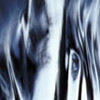 Although ostensibly a remix album, there is no need to be familiar with the source material to enjoy the remix work here. From what I gather, PureH are a successful electronic rock band out of Slovenia who invited a slew of electronic artists to rework a single track, "Signia." Not being familiar with the original track, I purposely avoided listening to the initial song to fully appreciate the remixes, which all vary greatly and, as a whole, make for strong, diverse tracks.
Although ostensibly a remix album, there is no need to be familiar with the source material to enjoy the remix work here. From what I gather, PureH are a successful electronic rock band out of Slovenia who invited a slew of electronic artists to rework a single track, "Signia." Not being familiar with the original track, I purposely avoided listening to the initial song to fully appreciate the remixes, which all vary greatly and, as a whole, make for strong, diverse tracks.
It is not hard to recall the all too brief existence of the so-called "isolationist" outgrowth of ambient music when looking at the artists charged with remixing PureH's track. Anyone who was listening to music of that ilk in the mid to late '90s (led by prolific artists such as Bill Laswell, Mick Harris, and Justin Broadrick) will recall names like Eraldo Bernocchi, P.C.M., D.J. Surgeon, and K.K. Null, who all appear on here. And along with these "big boys" there's a good mix of lesser known artists who show they have got the chops to hang with the established guys.
The established artists show that, some ten years after they first stepped on the scene (at least from this reviewer's perspective) they have largely refined and honed their work to stay contemporary, yet not alienate those who remember them from back in the day. K. K. Null takes the rather conventional sounding original material and pitch shifts it to a painful high end shriek as well as cutting up the rhythm section into dense, distorted loops that still allow a semblance of the original sound (via voical fragments and somewhat recognizable elements), but twists and turns it into pure sonic sadism in his "Signia Pagan" mix.
Another of the old recognizable names is the duo of P.C.M., who, though mostly limited to remixes and a single 12" on Mick Harris' old Possible label. They start out their "Signia Blue Waters Turn Black" mix with an opaque haze of thick reverb drenched loops that are met with a slow, monotone beat that eventually explodes into a hardcore blast of a drum n bass loop that plows through the mix like a pipe bomb. It has the manic intensity of vintage Squarepusher or Aphex Twin, but without the whimsical trappings and a sense of pure insanity. Unfortunately, Eraldo Bernocchi seems to have not developed his art as much as the others: while the dubby beat and subsonic bassline stay solid, there is simply less variation or development on here, and it's repetitive nature is among the gripes of artists from the time period.
The artists that I'm not quite as familiar with also hold their own among the big names. Chris Wood excerpts the electronic elements and tones from the original track and cuts them up with a high end skittering drum loop that morphs and changes throughout, making for an extremely dynamic track. Wodan takes the track for a more electro spin on "Signia H Light," throwing down an old school stiff monotone beat, swirled bass pastiches and an ordinate amount of distortion. Another unique take comes from Taiwanese artist MoShang, who uses the rock track as clay to sculpt into a light take on downtempo electronica, mixing in a hip-hop beat and additional samples. It's not really my thing, but it is well done. Clocking in at 16 minutes, Psychedelic Desert's "Signia Live Farce" mix comes across with good intentions, stripping the track down to only its most rudimentary sounds and tones, but over such a length it begins to drag and slow down. If it had been around the eight minutes that most of the other mixes were, it would have been a great contribution.
It is great to know that, even with my intentional abstention from checking out the original track, these artists can use that source material to design tracks that, while standing out on their own, still feel thematically linked by the occasional untreated elements of the original work coming through. Those who long for the days when dark textures mixed with hip-hop/jungle loops like peanut butter and chocolate will enjoy this stroll down memory lane. Now, to check out the original "Signia" track….
samples:
- Signia "Blue Waters Turn Black" (P.C.M. Mix)
- Signia "Ukwakha" (Chris Wood Mix)
- Signia "Live Farce Mix" (Psychedelic Desert Mix)
Read More
- Administrator
- Albums and Singles
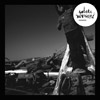 Most of the discs that have been on Utech's ARC series have been consistently dark excursions in texture and noise. Never full on harshness akin to Merzbow, but generally bleak, almost punishing works (in the best possible sense). As it is drawing to a close, this seems to allow a bit of light to seep in, but only in the darkest shades of gray. Former Boredoms/Zeni Geva player Mitsuru manages to take a unique spin on the series that has a greater warmth and somewhat less density, but it is by no means inferior.
Most of the discs that have been on Utech's ARC series have been consistently dark excursions in texture and noise. Never full on harshness akin to Merzbow, but generally bleak, almost punishing works (in the best possible sense). As it is drawing to a close, this seems to allow a bit of light to seep in, but only in the darkest shades of gray. Former Boredoms/Zeni Geva player Mitsuru manages to take a unique spin on the series that has a greater warmth and somewhat less density, but it is by no means inferior.
Book ended by the two-part "Mahhagogo" track, both of the parts open with Mitsuru and friends chanting the title before launching into a noise roar. While noisy, it isn't violently so—it is more of a humming, warm wall of distortion, like a forceful blast of hot air. Eventually the noise takes on the character of heavy blowing winds that have an alien, spacey quality to them, like being in the midst of a storm on Venus.
These beginning and end points of the album also make for the most challenging moments, as the middle are a little more comfortable and familiar. The untreated guitar playing of "Dust to Dust" is a bit jarring after the blast from before, but the gentle strums slowly give way to a building swell of feedback just a bit off from the mix that eventually grows to dominate and own the mix.
Also in the realms of conventional is the string plucking of "Tiovivo" that lend an almost spaghetti western soundtrack slant to the track. Honestly, this could almost be coming out of any coffee house in America if it weren't for the complex, dissonant guitar abuse that hides beneath the surface but slowly rears its ugly head to the point that it becomes the focus by the end. The title track is among the most bizarre of the disc, avoiding the plaintive guitar of the prior tracks and instead goes for the electronic treatment. The high pitched synth tones have a painful, tinnitus like sustain that stay the focal point from beginning to end, with more pulsing tones like radar beacons from deep, dark space.
The ARC series draws to its conclusion on a high note that is consistent with the previous releases. While there is a slightly different overall feel and vibe to Mitsuru's disc, it is by no means uncharacteristic of the series and is another fascinating installment. Why the Utech label isn't getting more recognition is a shame, and I hope the forthcoming fine art series that's planned helps to remedy this oversight.
samples:
Read More

